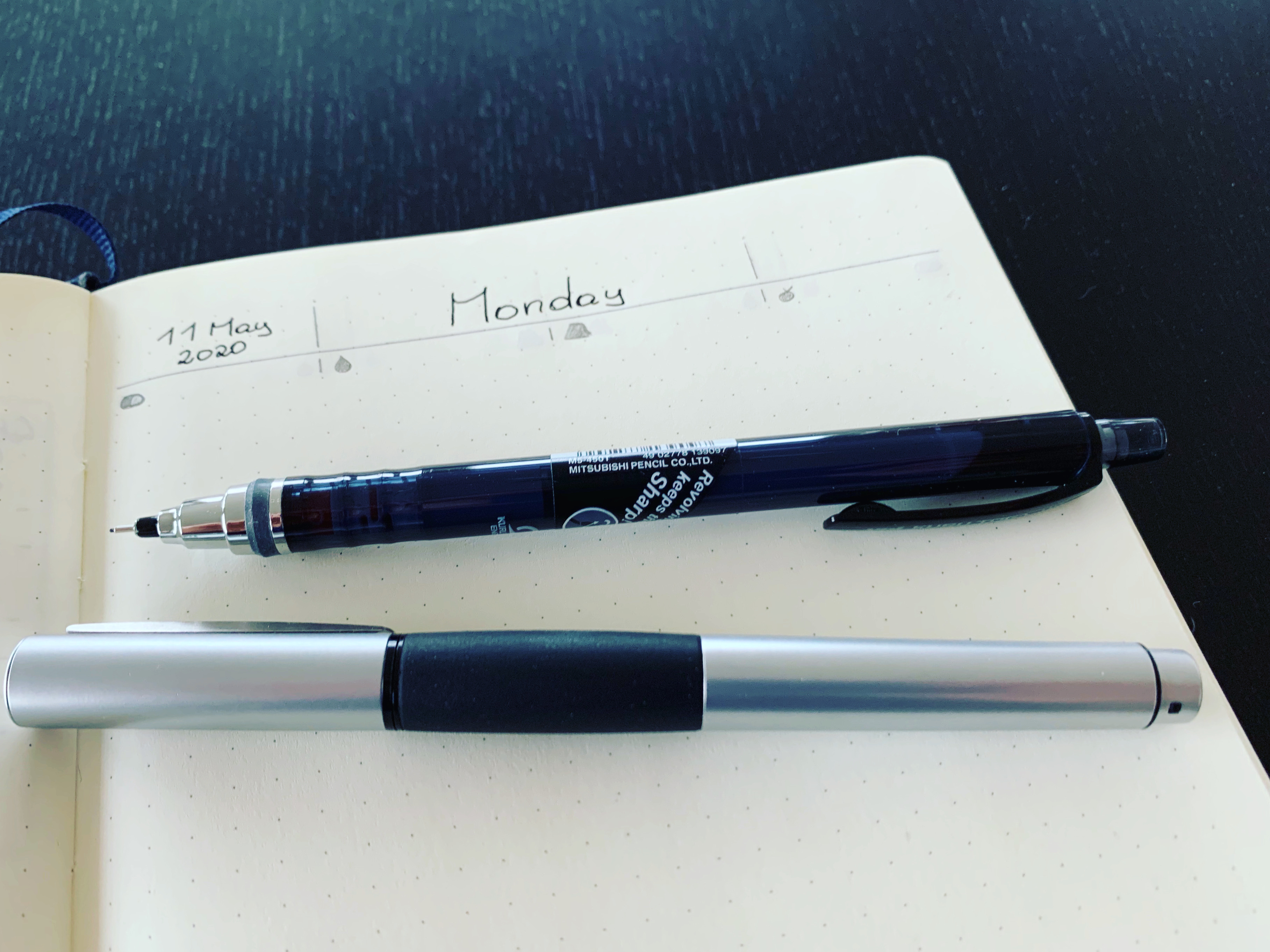Exactly 2 months ago, on 13 March, I started with an experiment: I stopped adding tasks and ideas to OmniFocus and began adding them exclusively to a dotted Leuchtturm 1917 A5 notebook. I wrote about that a little bit back then but thought it would be a good idea to do regular updates (every couple of months) on whether or not I still found it useful and how my process changes over time.
What do I want to achieve here?
So, first: what was the goal? I wanted to have a single system where I could collect the following items:
- Daily schedule including what you’d normally find in a calendar.
- Tasks that have to be completed by a certain time.
- Tasks that I plan to do today.
- Overview of “projects” and their progress.
- Habit tracking from things like how much water I’m drinking each day all the way to doing some exercising at least once per week. This also includes the books that I’ve read in the year so far and how many I still have to complete in order to reach my Reading-challenge goal by the end of the year.
I admit that this is quite a broad list but, so far, my journal does all these things and even more! It has even mostly replaced Apple Health for me which only receives very infrequent updates anymore. I’m even in the process of replacing my to-read list on Goodreads although I’m not yet sure if this list will actually make it into the journal. I might just add it to /reading/, instead 🙃
What’s my process?
The monthly page
Right when I start a new journal, the first thing I do is to create a monthly page that hold one line per day for important events, tasks that need to be done by then or at this particular day, and space for habit tracking. Right now I keep track of the following:
- Learn some French using Babbel
- Exercise
- Write a blog post
- Talk to parents
Future log
Next, I create a future log. Every page is split into 3 areas, one per month, with the goal of writing down events and tasks slated for the next 12 months.
Prepare for the week ahead
Every Sunday I try to sit down and prepare the daily pages for the next week. The template for such a page is pretty simple: It consists of 7 small boxes at the very top of each page that will hold the following data:

- Exact date (incl. year)
- Week day
- Weather of that day
- Time/check for any kind of medication I might need to take
- Amount of water I’m drinking (small line for a cup of tea, large line for a whole bottle (0.7l) of water)
- Morning weight in kg
- Number of completed pomodoros
The rest of each page is split into two columns where I do rapid logging according to the Bullet Journal method. If the monthly page indicates that I have some special events scheduled for today or some tasks that have to be done I add them right away to the respective daily page.
Day-to-day process
With pretty much the whole setup being done on the last day of each week, I can focus on the actual work once Monday starts. Here I basically just update the existing page when necessary and do rapid logging on the daily page.
The hardware
Last but not least, here’s a quick list of all the tools I use to journal:
- Leuchtturm 1917 A5 dotted hard-cover journal
- Lamy accent fountain pen
- Uni-ball Kuru Toga 0.5 mechanical pencil
- Triangle ruler (mostly because I don’t see the advantage of using a normal ruler that would take pretty much the same space in my journals back-pocket 😅)
Will I keep doing it?
That whole Bullet Journaling-thing was originally planned as an experiment. I had invested a lot of time and money into GTD and optimising my workflows around OmniFocus and I still believe that OmniFocus is the best tool for doing GTD. But keeping everything inside a journal has worked out even better than I expected. I get lots of gratification out of seeing what I’ve completed each day and being able to just flip back in the book to find out what I did on a particular day. I’m pretty sure I’ll keep using this method for the next couple of months and re-evaluate it then 😊

Do you want to give me feedback about this article in private? Please send it to comments@zerokspot.com.
Alternatively, this website also supports Webmentions. If you write a post on a blog that supports this technique, I should get notified about your link 🙂